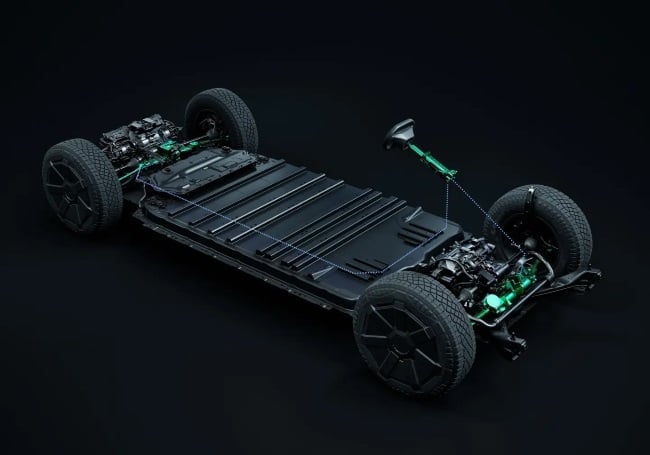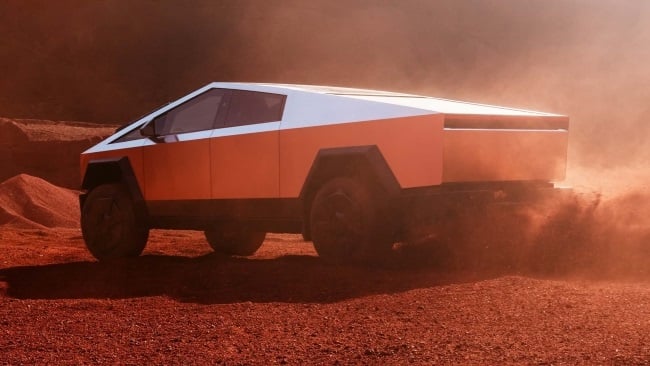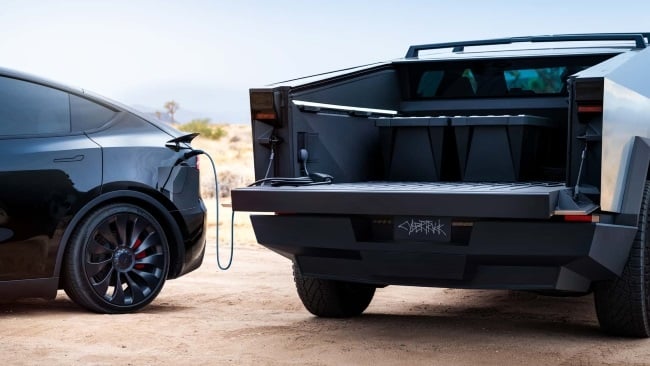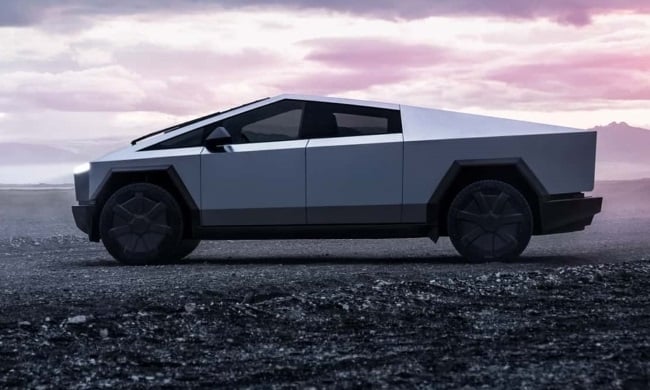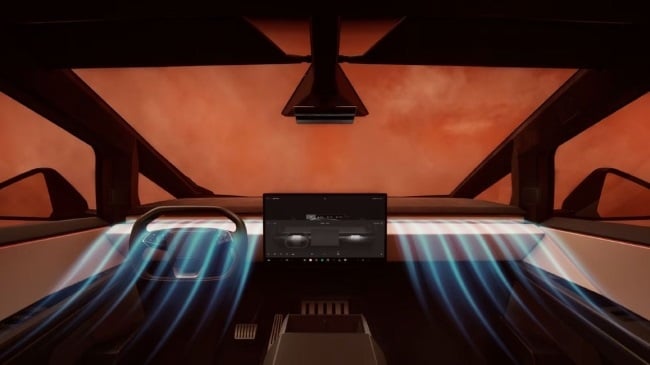
- Elon Musk said that the Tesla Cybertruck, bearing no resemblance to any of its other offerings, is a car of the future.
- Considering the aesthetics of the existing Tesla lineup, the Cybertruck doesn't really fit in.
- The design is bold, but if Tesla vehicle designs have traditionally been about efficiency, what is the goal for the Cybertruck?
Broadcasting live on X (formerly known as Twitter) earlier in 2023, Tesla's CEO (and X owner) Elon Musk said that the Tesla Cybertruck is a car of the future "that looks like the future".
The design is bold. Not just due to the unusual shape and the stainless steel finish, but also in the product offerings. The stainless steel panels and finish are reminiscent of the ill-fated DeLorean DMC-12 that, while beloved for its starring role in the Back to the Future franchise, was otherwise disastrous for the company and a rather lacklustre car with many issues.
The angular shape, flat surfaces and triangular roof line of the Cybertruck look like nothing else currently on sale. The vehicle is very different from the traditional Tesla line up, which are more curved and jelly mould-like in their appearance. This means they're highly aerodynamic, with reduced drag to maximise their electric range.
Inconsistent brand identity
Automotive manufacturers typically have a design language that underscores all of their vehicles, clearly indicating the brand. This could be signified by a consistent grille design or the shape and form of their cars. Take the kidney-shaped grille on BMWs or Mazda's "Kodo" design philosophy, for example, which aims to evoke motion even when the car has stopped.
However, Tesla seems to have designed the Cybertruck to bear no resemblance to any of its other offerings. Externally, at least, there's no clear brand consistency.
Sure, pickups often look different to cars made by the same company due to their differing functions, however even the Tesla Semi, a heavy goods vehicle, retains the jelly mould styling and associated aerodynamic benefits of the Tesla cars. Considering the aesthetics of the existing Tesla lineup, the Cybertruck doesn't really fit in.
So, if Tesla vehicle designs have traditionally been about efficiency, what is the goal for the Cybertruck? In design there is a well know saying that "form follows function". In Tesla's lineup to date, their design language clearly speaks to efficiency and dynamism.
However, the rather surprising outcome of the Cybertruck delivery event launch on 30 November was the admission by Musk that the angular shape had largely been decided by the material choice: high-strength stainless steel (understood to be 30x cold-rolled stainless steel). This choice has apparently restricted the manufacturing process, resulting in a flatter, angular form.
Why choose a material that is more difficult to form using traditional processes and that compromises your design language and aerodynamic efficiency? The takeaway from the delivery event is that this material has enabled Tesla to make a truck that is bulletproof – which the livestream went to great lengths to demonstrate with the use of a sub machine gun.
So, if form follows function, the key function that has determined the design of the Cybertruck is the requirement to be bulletproof. For a public-facing consumer vehicle, that's a rather surprising unique selling point. Especially when taken in the context of Musk's "why not" reasoning, which he followed up with the rather worrying statement:
The Cybertruck's safety
While much of Tesla's PR relates to the Cybertruck's robustness and security, concerns around safety mean it will never be able to be sold in Europe – in its launch form at least. This is due to a lack of pedestrian safety.
At the launch event, Musk said of driving the truck: "If you have an argument with another car, you will win." The Cybertruck appears to focus very much on protecting its occupants, while negating the advances in road safety that consider vulnerable road users such as pedestrians, cyclists, motorcyclists or even other vehicles.
READ | South Africa 'doesn't make sense for Tesla', says Elon Musk
The Cybertruck weighs 6 843lb (3 104kg). Most non-EV pickups weigh less than 3 000kg and the average car weighs less than half of this again. This higher mass would mean that any collisions with a lighter vehicle could be very serious.
The high bonnet and bumper means that a pedestrian would likely be hit by the ultra-hard stainless steel structure of the front bumper and bodywork, where the grille would traditionally be. Tesla did not respond to a request for comment on the safety of the Cybertruck.
In contrast, a typical European hatchback is designed so that a pedestrian would fall onto the bonnet, which is made to deform and absorb the impact on the pedestrian's head. Bonnets of cars are often made from lighter, less dense material such as aluminium for increased pedestrian safety.
While this design feature means the Cybertruck cannot be sold in Europe, it can be sold in North America, Canada and Mexico. That's because in these markets it falls under a different classification of light-medium duty truck, meaning that it doesn't have to adhere to passenger-car pedestrian safety legislation.
This is a shame, as Tesla has recently invested in pedestrian-focused technology for its cars. The Model 3, for example, features a detection system and active bonnet that lifts to reduce the impact forces of a pedestrian in a frontal collision.
In its design, the aesthetics and safety considerations of the Cybertruck have diverged from Tesla's previous values. This begs the question: beyond the initial early adopters, celebrities and influencers, who is this truck for?
Surely it won't appeal to the same core base of existing environmentally-conscious Tesla customers. And a bulletproof, go anywhere, do anything tank with the ability to reach 60mph in 2.6 seconds is quite a tool in the wrong hands.
This article has been amended to change the mass of the Cybertruck from 6 843kg, as incorrectly stated by the Tesla website, to 6 843lb, the correct mass.
Looking for something good? Cut through the noise with a carefully curated selection of the latest releases, live events and exhibitions, straight to your inbox every fortnight, on Fridays. Sign up here.![]()
Matthew Watkins, Principal Lecturer in Mechanical Engineering, Nottingham Trent University
This article is republished from The Conversationunder a Creative Commons license. Read the original article.




 Publications
Publications
 Partners
Partners





